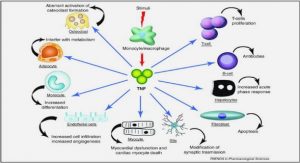Get Complete Project Material File(s) Now! »
RESEARCH DESIGN
The research design was a qualitative paradigm that was descriptive and contextual in nature (Leedy & Ormrod, 2001; Mouton & Marais, 1996; Schurink, 1998).
Primarily qualitative research methods were utilised for the purposes of this study. According to Kirk and Miller (1986:9), qualitative research is “…a particular tradition in social science that fundamentally depends on watching people in their own territory and interacting with them in their own language, on their own terms.” The purpose of qualitative research is to observe, describe, explain, interpret, and then to present in an organised way in order to contribute to the development of theory (Leedy & Ormrod, 2001). In the current study a qualitative analysis of teachers’ needs regarding the management of children with hearing loss within the inclusive educational system, made it possible to determine their current needs. In addition, more specific information could be obtained through comparison and dependency tests of variables, such as their level of graduate training and amount of experience.
By means of quantitative analysis, findings could be interpreted in terms of their generalizability to the whole population of teachers of children with hearing loss in South Africa. Thus, both qualitative and quantitative measures were employed to analyze the results of this study (Mouton & Marais, 1996).
The main thrust of the design remained qualitative, however. In particular, a descriptive research design (Mouton & Marais, 1996) was selected for this study. This design involved the utilisation of the questionnaire survey method to obtain a measure of the needs of teachers in the inclusive educational system. The survey was supplemented by focus group interviews in order to enrich the qualitative nature of the study (Stewart & Shamdasani, 1990). A descriptive study made an in-depth description of a specific group possible and also made it possible to subsequently determine the frequency with which specific characteristics or variables occurred in that sample (Mouton & Marais, 1996). The single common element in all descriptive types of research, is the goal to describe that which exists as accurately as possible (Mouton & Marais, 1996). In the case of this study, it was to portray teachers’ needs regarding an educational audiology service delivery model within the inclusive educational system.
The contextual nature of the research design referred to the collection of findings among a specific professional group, namely teachers of children with hearing loss within a specific geographical area, namely the whole of South Africa (Schurink, 1998).
The main research protocol comprised of a questionnaire survey followed by focus group interviews. The use of a combination of research methods to explore a particular topic had the potential of maximising the quality of data collection and reducing the chance of bias (Berg, 1998). For the present study, the use of different methods enabled the forming of a comprehensive depiction of the needs of teachers of children with hearing loss regarding an educational audiology service delivery model within the inclusive educational system.
The empirical research consisted of three main phases, namely a pilot study, the main study, and an analysis of the results. A graphic representation of the empirical research phases and their respective participants are presented in Figure 4.1. Firstly, a pilot study was conducted to pre-test the data collection instruments, equipment, and procedures (Leedy & Ormrod, 2001). After the necessary changes were made based on the results of the pilot study, teachers selected for the main study were requested to complete the questionnaire (Berg, 1998). Results obtained from the questionnaire survey were used to identify themes to be used in focus group interviews (Morgan, 1997). Finally, focus group interviews were conducted and results obtained were analyzed quantitatively and qualitatively (Mouton & Marais, 1996).
Selection procedures of schools
The following procedures were employed for the selection of schools. All 35 schools currently providing for children with hearing loss in South Africa were identified from a list obtained from the Deaf Federation of South Africa (DEAFSA, 2001a) and were included in the questionnaire survey (See Appendix A).
The transferability of the results obtained from participants was increased by the inclusion of all schools in South Africa, thus ensuring that the results obtained were representative of teachers of children with hearing loss in South Africa (Reid & Gough, 2000) Two schools of the total number of schools were purposefully (Leedy & Ormrod, 2001) selected from the list of Gauteng schools for participation in the focus group interviews.
The schools to participate in focus group interviews were purposefully selected, because this facilitated analysis of differences between predetermined heterogeneous groups (Morgan, 1997). Furthermore, these two schools were specifically selected, because both of these schools had a national reputation for being schools with high teaching standards and dedicated teaching staff; and had shown a willingness to participate in research projects in the past.
Description of participating schools
Questionnaires were sent to 32 of the total of 35 schools, thereby excluding the three schools used during the pilot study and focus group interviews.
These three schools were excluded in order to avoid data-contamination (Neuman, 1997). After completion of the survey, 84% of schools returned their questionnaires. Of the total number of schools providing for children with hearing loss in South Africa, 77% of schools participated in the survey. As mentioned previously, only eight of the nine provinces had schools providing for children with hearing loss in South Africa. Schools that participated in the survey, represented all eight provinces with schools for children with hearing loss, namely: Eastern Cape, Free State, Gauteng, Kwazulu-Natal, Limpopo, Mpumalanga, North West, and Western Cape (See Appendix A). This is a
very good statistical representation of the total population of schools in South Africa (Huysamen, 1998).
CHAPTER ONE: INTRODUCTION AND ORIENTATION
1.1_ INTRODUCTION
1.2 RATIONALE
1.3 STATEMENT OF PROBLEM AND FINDING A SOLUTION
1.4 OUTLINE OF CHAPTERS
1.5 DEFINITION OF TERMS
1.6 ACRONYMS
1.7 CONCLUSION
1.8 SUMMARY
CHAPTER TWO: ROLE OF THE TEACHER OF THE CHILD WITH HEARING LOSS
2.1 INTRODUCTION
2.2 UNIQUE EDUCATIONAL CONSIDERATIONS FOR EACH CHILD
2.3 THE ROLE OF THE TEACHER REGARDING THE EDUCATION OF THE CHILD WITH
HEARING LOSS
2.4 CONCLUSION
2.5 SUMMARY
CHAPTER THREE: SERVICE DELIVERY BY THE EDUCATIONAL AUDIOLOGIST
3.1 INTRODUCTION
3.2 THE EVOLVEMENT OF THE SPECIALIST FIELD OF EDUCATIONAL AUDIOLOGY
3.3 INTERNATIONAL MODELS OF EDUCATIONAL AUDIOLOGY SERVICE DELIVERY
3.4 SERVICE DELIVERY BY THE EDUCATIONAL AUDIOLOGIST IN THE SOUTH AFRICAN
INCLUSIVE EDUCATIONAL SYSTEM
3.5 A PRELIMINARY MODEL FOR SERVICE DELIVERY BY THE EDUCATIONAL AUDIOLOGIST IN THE INCLUSIVE EDUCATIONAL SYSTEM
3.6 CONCLUSION
3.7 SUMMARY
CHAPTER FOUR: METHODOLOGY
4.1 INTRODUCTION
4.2 RESEARCH AIMS
4.3 RESEARCH DESIGN
4.4 PARTICIPANTS
4.5 DATA COLLECTION INSTRUMENTS AND EQUIPMENT
4.6 PILOT STUDY
4.7 PROCEDURES
4.8 RELIABILITY, VALIDITY, AND TRUSTWORTHINESS ISSUES
4.9 ETHICAL CONCERNS
4.10 CONCLUSION
4.11 SUMMARY
CHAPTER FIVE: RESULTS AND DISCUSSION
5.1 INTRODUCTION
5.2 RESULTS AND DISCUSSION OF OBJECTIVE #1: PARTICIPANTS’ NEED FOR SUPPORT IN THE ACQUISITION OF KNOWLEDGE OF EDUCATIONAL AUDIOLOGY
5.3 RESULTS AND DISCUSSION OF OBJECTIVE #2: PARTICIPANTS’ NEED FOR SUPPORT
IN THE AUDIOLOGICAL AND EDUCATIONAL MANAGEMENT OF THE CHILD WITH HEARING LOSS
5.4 RESULTS AND DISCUSSION OF OBJECTIVE #3: PARTICIPANTS’ NEED FOR SUPPORT REGARDING THE STRUCTURE OF SERVICE DELIVERY TO CHILDREN WITH HEARING LOSS
5.5 CONCLUSION
5.6 SUMMARY
CHAPTER SIX: CONCLUSIONS AND IMPLICATIONS
6.1 INTRODUCTION
6.2 CONCLUSIONS AND CLINICAL IMPLICATIONS
6.3 CRITICAL EVALUATION OF THE STUDY
6.4 RECOMMENDATIONS FOR FURTHER RESEARCH
6.5 CONCLUSION
APPENDICES
REFERENCES






